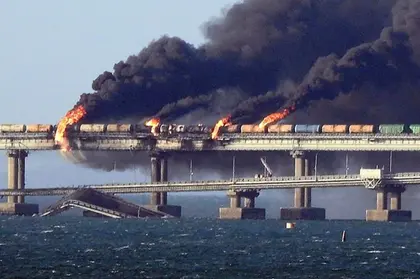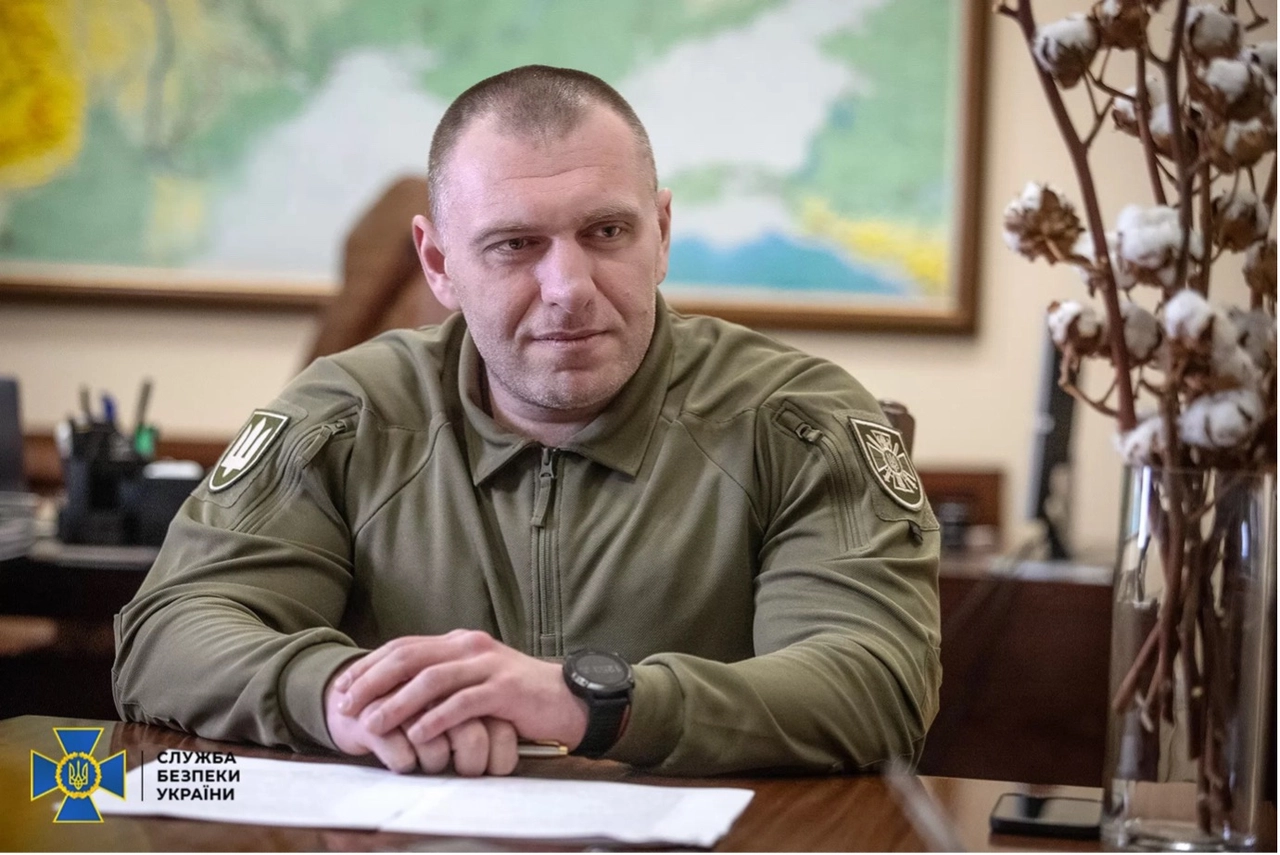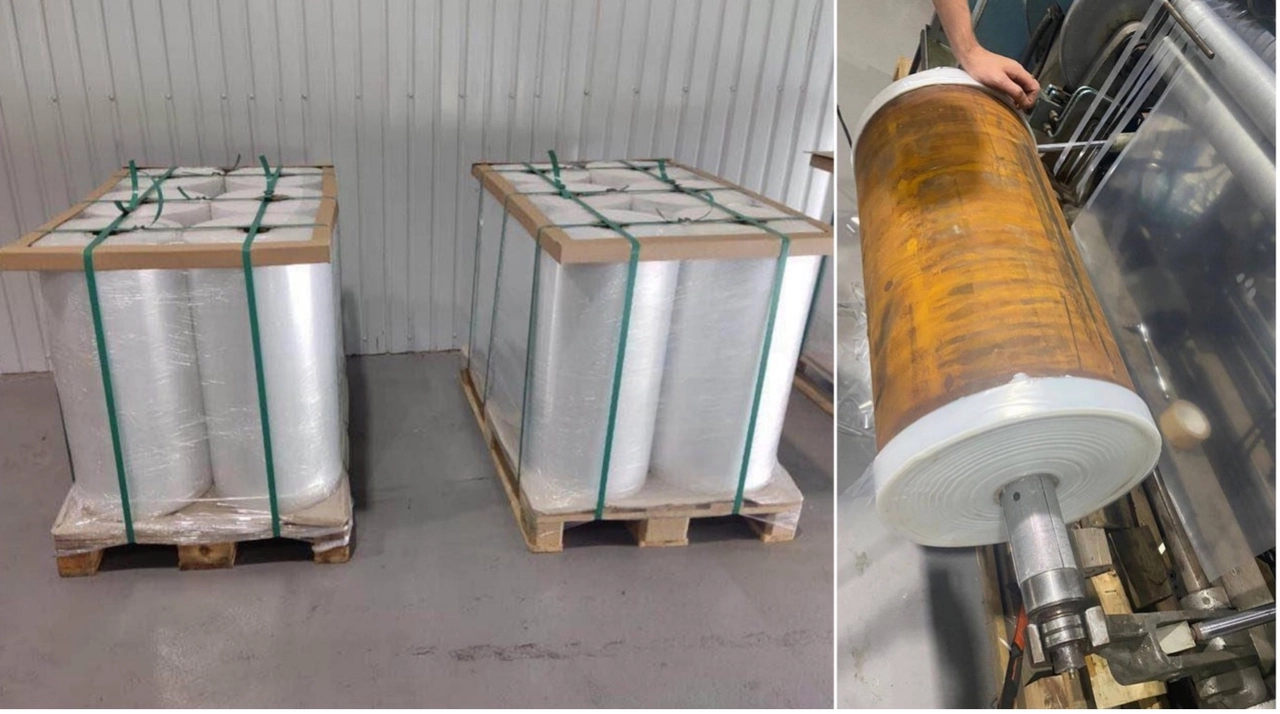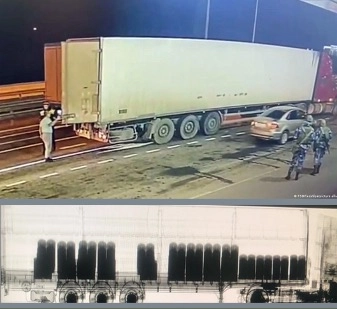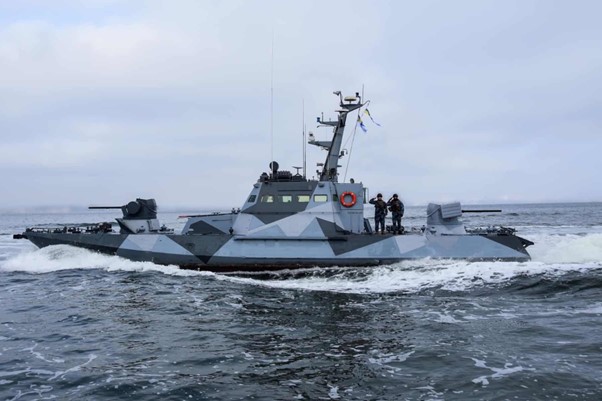On Oct. 8, 2022, an explosion damaged the Kerch Bridge connecting Russia with illegally occupied Crimea. The attack caused two spans of the road-bridge to collapse, damaged one other, and set a train adjacent to the explosion on fire, damaging a substantial length of rail-track.
Videos of the blast, which seemed to emanate from a Russian registered truck crossing the bridge, went viral, sending conspiracy theorists into overdrive. “Experts” commented on the extent and nature of the damage to the bridge, which indicated that the truck was or was not involved; missiles were or were not used; special forces did or did not place the charges; the explosion did or did not originate from a vessel underneath the bridge.
JOIN US ON TELEGRAM
Follow our coverage of the war on the @Kyivpost_official.
Major General Vasyl Maliuk, Head of the SBU
Photo: SBU
How was the attack carried out?
Maj. Gen. Vasyl Maliuk, Head of the Security Service of Ukraine (SBU) gave an interview with Ukraine’s NV magazine, which seemed to finally settle the issue and seemed surprisingly close to claims made by Russia’s Federal Security Service (FSB) which were widely discredited at the time.

Fico’s Coalition Critically Weakens as More MPs Withdraw Support – for Now
According to Maliuk, the SBU had started planning an attack on the bridge almost from the first days of Russia’s full-scale invasion. The bridge was an attractive target both because of its potential military value, as the main conduit for military resupply from mainland Russia to the peninsula, but also because of the propaganda value of a successful attack against one of Putin’s pet projects.
It was assessed that a large quantity of explosives would be needed and a number of options for getting it on the bridge were considered. One suggestion was to place the explosives on a freight train, but there were too many restrictions governing the carriage of non-military freight over the bridge in place. It quickly became obvious that the only practical option was to load a truck with the explosives, hidden in a way that could not be detected by the Russian countermeasures introduced on the entrances to the bridge.
“It was important that the camouflaged explosives could get from point A to point B, and cross the Kerch Bridge,” Maliuk explained.
It was decided that the attack would employ an RDX-based explosive equivalent to more than 20 tons of TNT. Initially it was suggested to hide the explosives in barrels of oil, but there was a danger that this would be detected by the ST-6035 X-ray inspection system employed on the bridge. A series of trials finally settled on using metal cylinders filled with the explosive replacing the center spindles for rolls of polythene sheeting, an innocuous material with a wide number of commercial uses. SBU testing identified the thickness of the film layer needed to hide the explosives from customs scanners.
The appearance of the explosive consignment
Photo: SBU
Maliuk is reticent on divulging how the truck used was selected, how the cargo got on board, and how its point of origin was disguised. He did comment that the passage of the consignment from Ukraine to the bridge was very complicated and was completed “without the involvement of foreign partners.” Reading between the lines, it seems likely that the SBU passed the consignment among different commercial handlers to obscure its origin and the route used to transport it.
The Germany based news site Novaya Gazeta Europe identified one of the commercial entities, unknowingly involved, as being a St. Petersburg logistics company, which had signed a contract to transport the 21 tons of “polyethylene film.”
Additionally, Maliuk spoke in vague terms about how the SBU team was able to overcome the GPS jammers Russia had installed on the Kerch Bridge, that block vehicle GPS navigation systems, to ensure that detonation occurred “approximately in the middle of the bridge.” He hinted that the cargo had been “under surveillance” including the use of video throughout its journey.
“It was an indescribable feeling. When the explosion happened, we screamed so loudly as the tension inside was huge,” said Maliuk, who personally planned and supervised the special operation.
In the aftermath of the attack, Moscow arrested 22 people, all of whom the SBU chief said “were engaged in their usual routine.” Maliuk clarified: “They were ordinary Russian smugglers.” It is understood that some of these individuals remain in custody almost a year later.
What did Moscow say had happened?
Russia immediately classified the incident as a terrorist attack, which they ascribed to Ukraine’s military intelligence agency (HUR). President Putin initiated a special commission to include representatives of the Ministry of Emergency Situations, the Ministry of Transport, the FSB, the Ministry of Internal Affairs and the National Guard to investigate.
Within a couple of days, the FSB scooped up a handful of suspects and produced images which purported to show the truck involved in the attack being inspected on two separate occasions – physically in Taman, the closest city to the Russian side of the bridge, and then by X-ray on entry to the bridge. The X-ray image, according to Russian media citing the FSB at the time, showed the explosives hidden among pallets loaded with rolls of plastic film.
Screenshots of the FSB purported images of the truck used being inspected and X-rayed
The FSB-provided images were dismissed at the time as they were apparently of two different vehicles, but the security services later said this was because the load had been transferred between vehicles, before reaching the bridge. The Russian investigation concluded that 22.7 tons of explosives contained on 22 pallets were used in the attack. The consignment had been loaded in Odesa at the beginning of August 2022 and shipped to Bulgaria before passing through Armenia, Georgia, North Ossetia, Krasnodar (in southern Russia). On Oct. 7, it was loaded onto a Russian truck bound for Simferopol.
The investigation put the blame for the success of the attack on the negligence of personnel responsible for security control of cargo, both in Taman and at the entrance to the bridge.
The results of Russia’s investigation which, were dismissed as the usual failed “witch hunt” at the time, are so closely aligned to Maliuk’s own account, one might conclude that either the FSB were more efficient than usual in getting to the circumstances of the attack, or the SBU were happy to reinforce an inaccurate outcome and use the opportunity to obscure the truth about the October operation.
You can also highlight the text and press Ctrl + Enter


